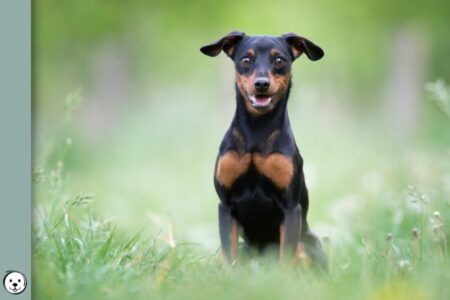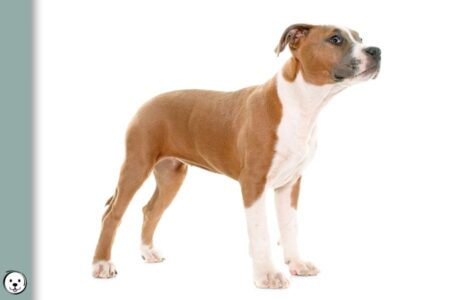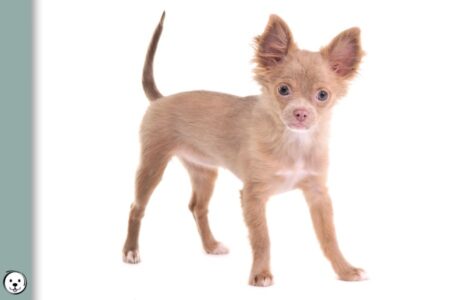If your dog has a lighter coat on his underside compared to his upper side he likely has some form of countershading. This is a pattern found in many animal species including dogs.
Content
What is Countershading?
Animals with countershading have a much paler underside compared to the upper half of their body.
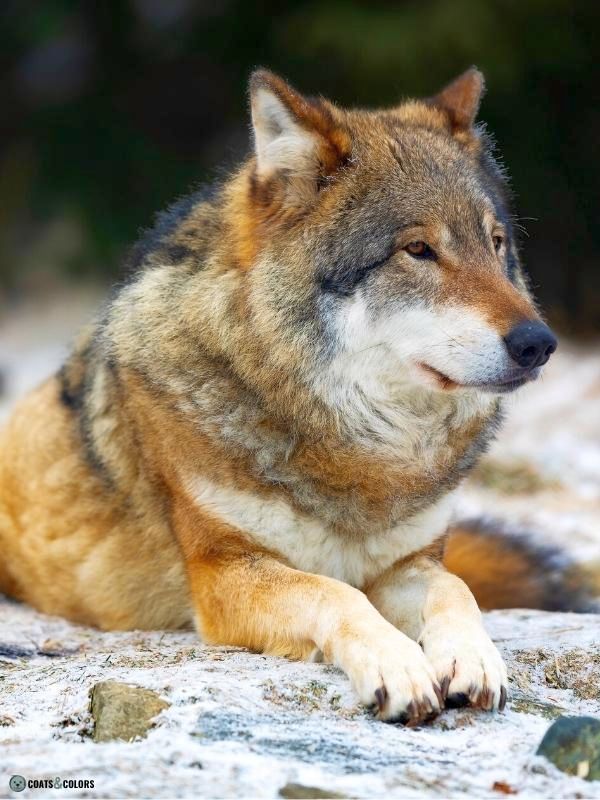
This type of coloring represents the wild type in dogs and many other animals. We don’t know the function of countershading is[2]. A common theory explains countershading as an adaptation that counterbalances the body’s shadow and provides camouflage[1].
See, an animal that is lit from above casts a shadow. This creates a contrast between top and bottom and makes it easy to spot. Having a pale underside counterbalances the shadowing effect, decreases contrast and thus helps to blend with the background. So countershading in wild dogs, wolves or other species is thought to improve background matching and reduces the dog’s contour.
But countershading might have different or additional functions. Maybe more pigment on the upper side gives more protection from sunlight. But we really don’t know for now.
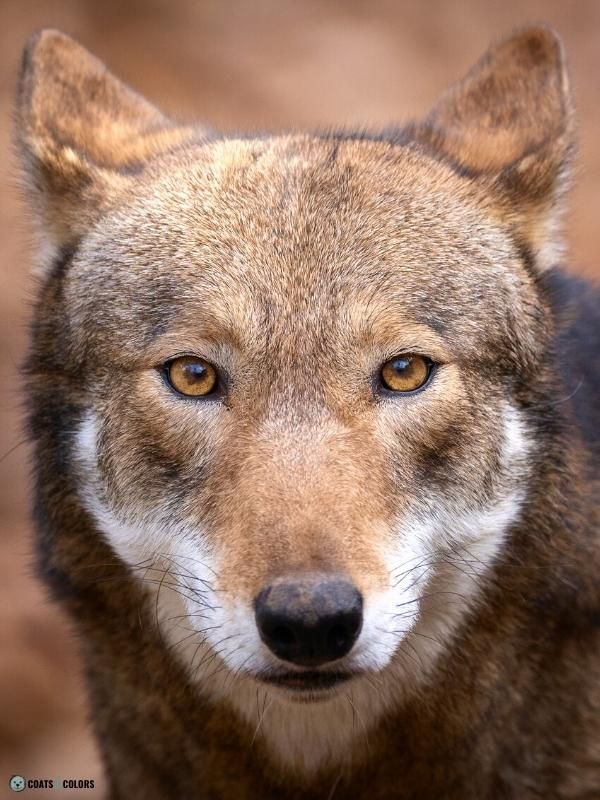
Countershading in Dogs
Countershading only affects the red pigment type phaeomelanin. In dogs with countershading, the pigment on the dog’s underside turns paler compared to the red pigment on his upper body.
Some hue variation is considered normal in about every red dog. But countershading causes a pale pigment intensity on distal parts of the body and extremities.

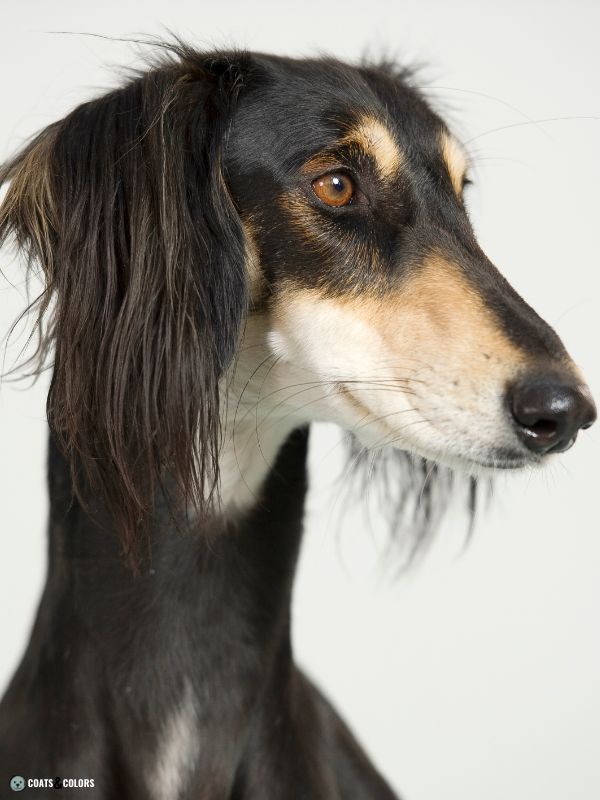
Countershading noticeable adds pale markings to the lower half of the muzzle, cheeks, eyebrows, lower jaw, throat, forechest, belly, inside of the legs and the underside of the tail. Although in some dogs it doesn’t create very pronounced facial markings.
Many different dog breeds can have countershading. In some breeds, it just occurs occasionally or is hidden by other patterns like white spotting. In other breeds, countershading is a required trait and part of the breed standard. Japanese breeds like Shiba Inu or Akita call their countershading Urajiro.
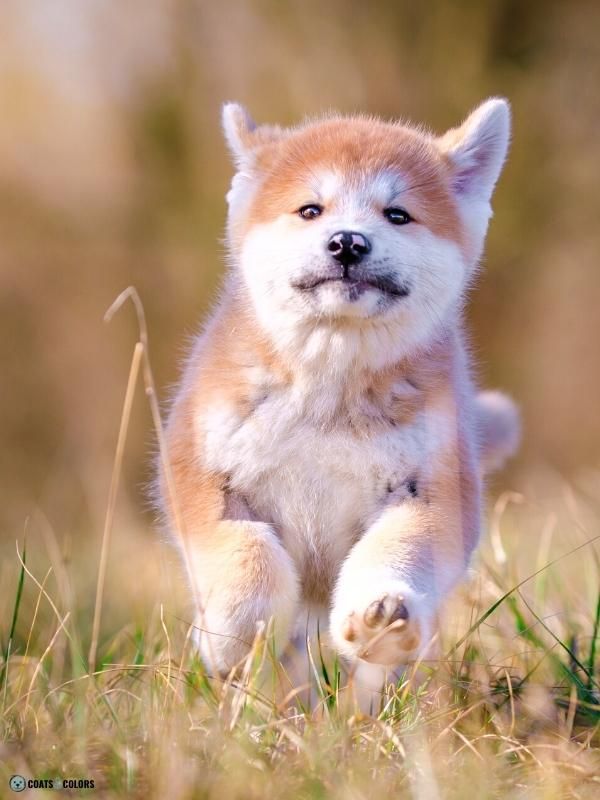
Countershading can be pale red, cream or nearly white. In some cases, it is very bright and refined with crisp edges. In other cases, the pale coat gradually blends into the red on the dog’s upper side.
So countershading may be loud or subtle. And of course, it stands out more in dogs that produce dark orangey or red pigment on their upper side. If a dog has a low phaeomelanin intensity we can’t really spot pale countershading on an already very pale coat.
There might be different versions of countershading and some modifier genes might be at play and cause differences in intensity and spread of countershading. But for now, we still know very little about the genetics of countershading.
Countershading Examples
Countershading can only be visible in patterns with some amount of red pigment. This includes patterns like sable, shaded sable, agouti, saddle pattern or tan points with or without brindle.
In some cases, the lighter markings may be hidden by other patterns a dog has.
This can happen due to white spotting (or Irish spotting like in Corgis, etc.). Or heavy brindle may cover up areas with red pigment. And northern domino or sighthound domino tend to cause pale phaeomelanin and can obscure the original color gradient.
Many breeds with countershading have a black mask. But extended melanistic masks sometimes add pigment not only to a dog’s muzzle but also to its chest and legs. This can cover some of the countershading.
Urajiro
Urajiro is just the term many Japanese breed standards use for countershading. It can be translated as “underside white“.
Shiba Inus and Japanese Akita are known for their often very bright and refined countershading.
But urajiro is used to describe any form of countershading and is also used in breeds with less pronounced patterns like Kishu. Urajiro can have colors between beige and creamy white, have different spreads and can have crisp edges or blend into the red coat.
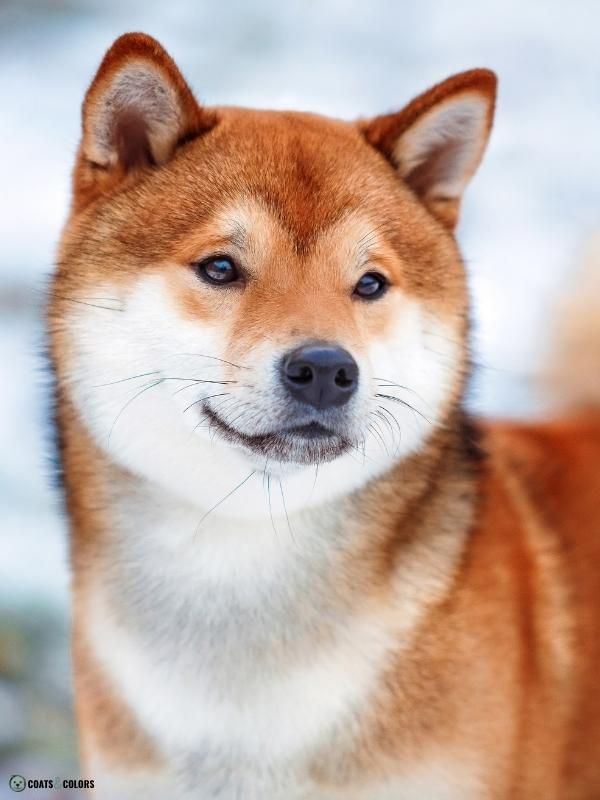

Countershading and Sable
In solid red dogs, the effect of countershading stands out the most. But countershading does also happen in dogs with tipped or shaded sable.
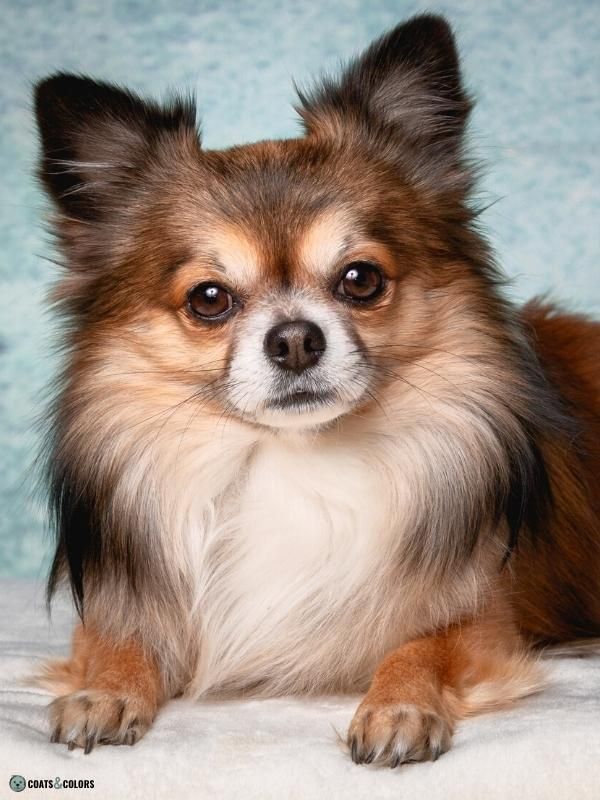
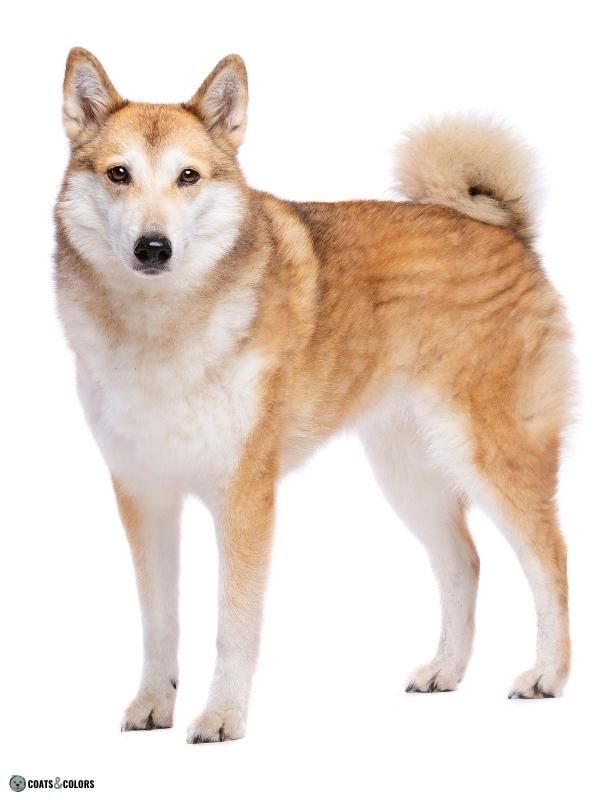
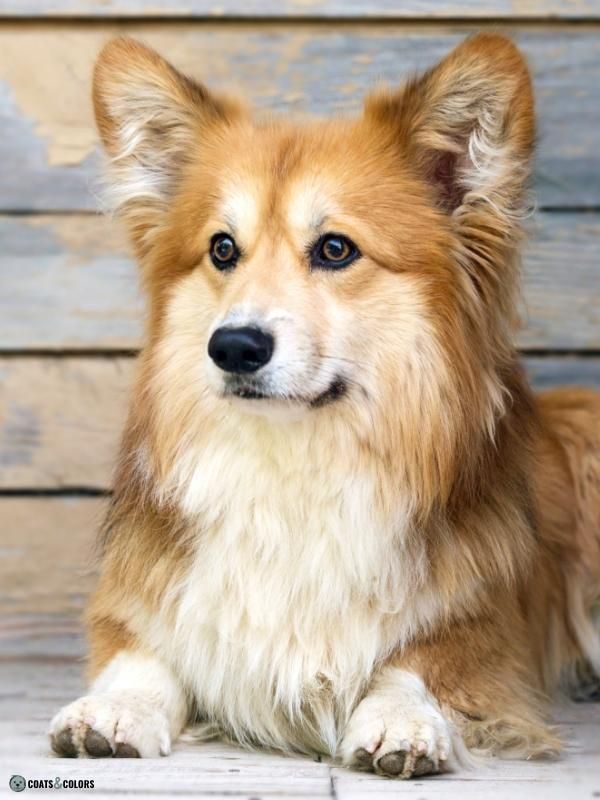
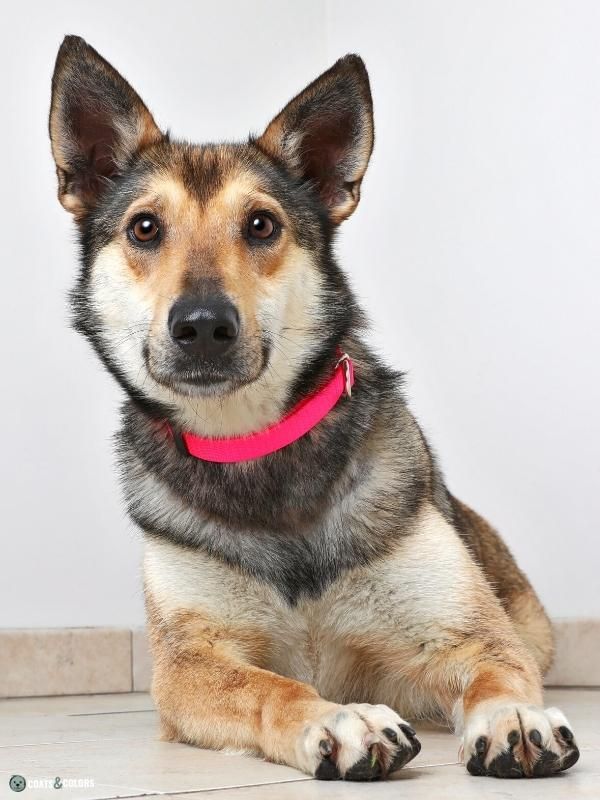

Countershading and Agouti
Agouti causes black-banded hair on a dog’s upper side but leaves solid red areas on the lower muzzle, above the eyes and on the legs and belly.
Countershading adds a color gradient inside the red pigment from bottom to top. This is a very wolf-like pattern combination found in breeds like Siberian Laika, Saarlooswolfdog, Czechoslovakian Wolfdog or Tamaskan.
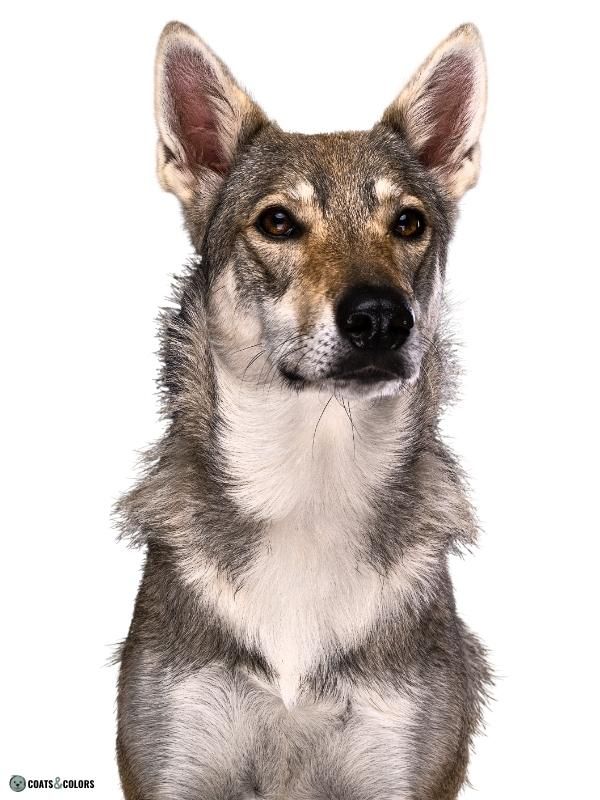

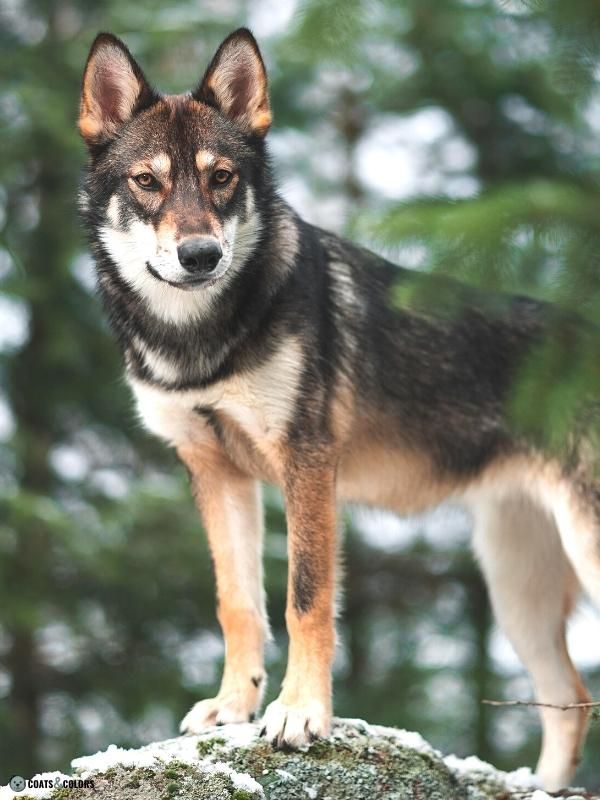
Countershading and Brindle
Brindle adds vertical stripes of dark pigment on top of any red coat. It covers some of the countershading pattern which is only visible in-between brindle stripes.
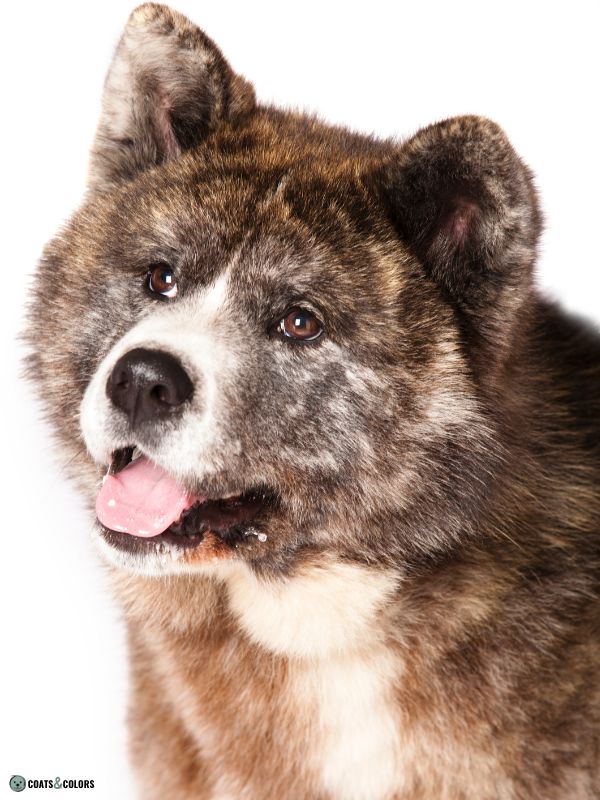

Countershading and Tan Points
Countershading only affects red pigment, remember?
So combined with a tan point pattern only the tan markings are affected. Usually, the lower jaw and throat have a much lighter color intensity than markings along the nose bar and above the eyes.

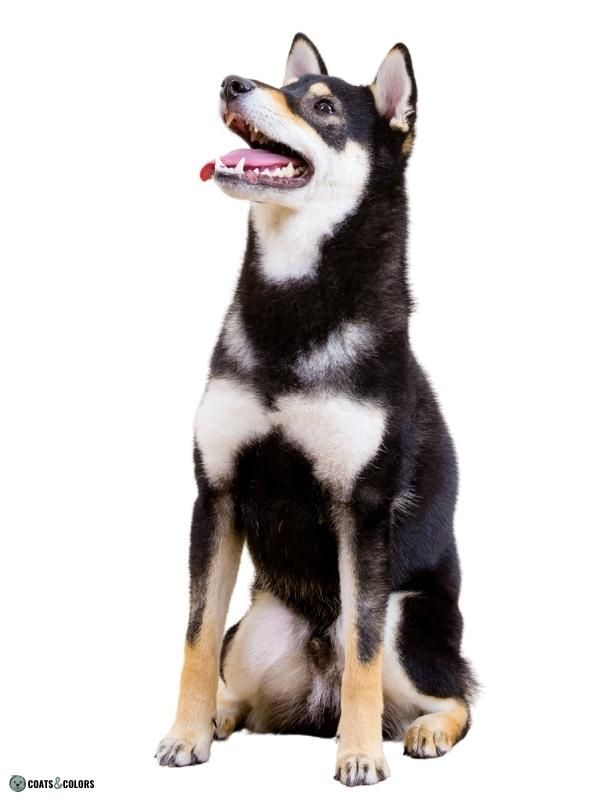
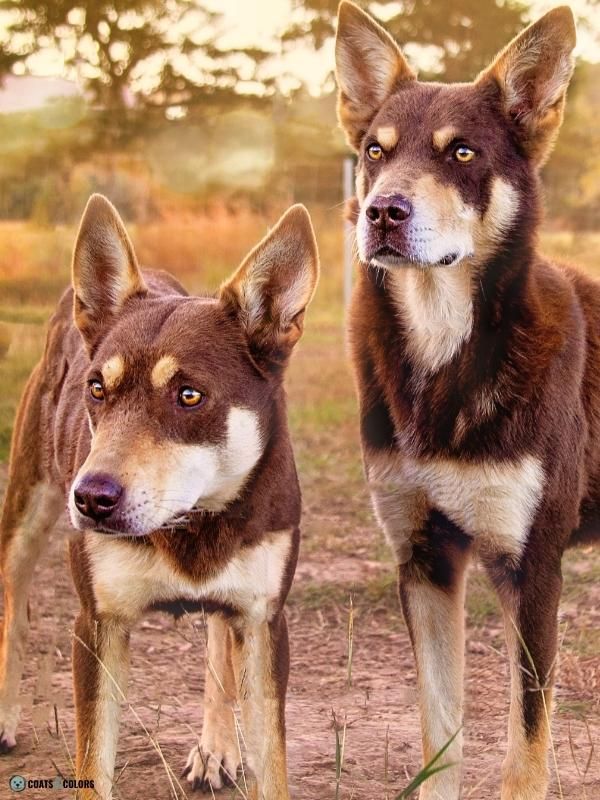
Countershading and Saddle Pattern
Dogs with creeping tan or a saddle pattern have large areas with tan pigment. So countershading usually is easy to spot in these patterns.
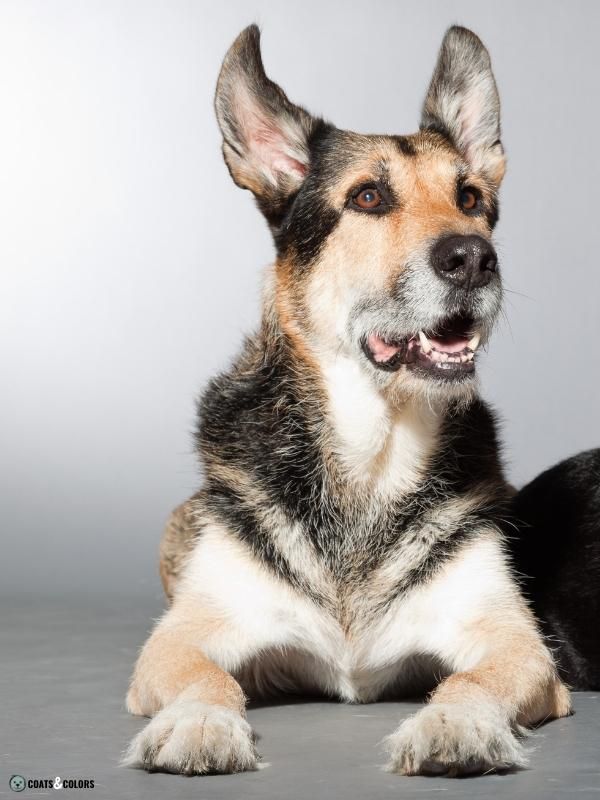
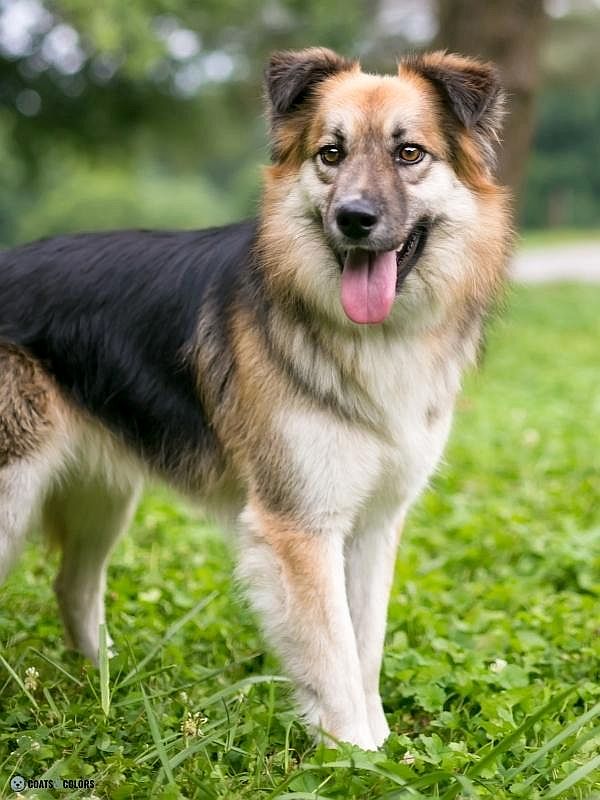
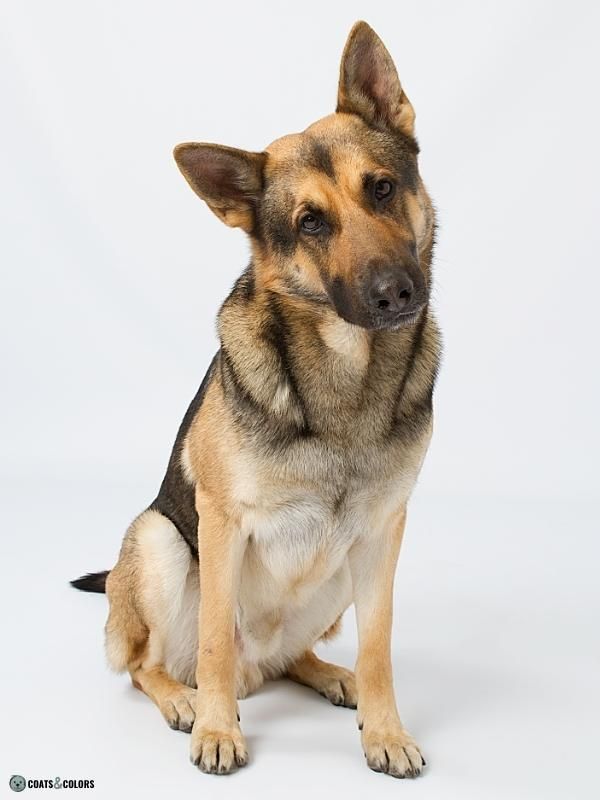
Countershading and Recessive Red
Many dogs with solid recessive red coat have a darker upper side and paler legs and a paler belly. But they don’t seem to express the lighter facial markings typical for complete countershading.
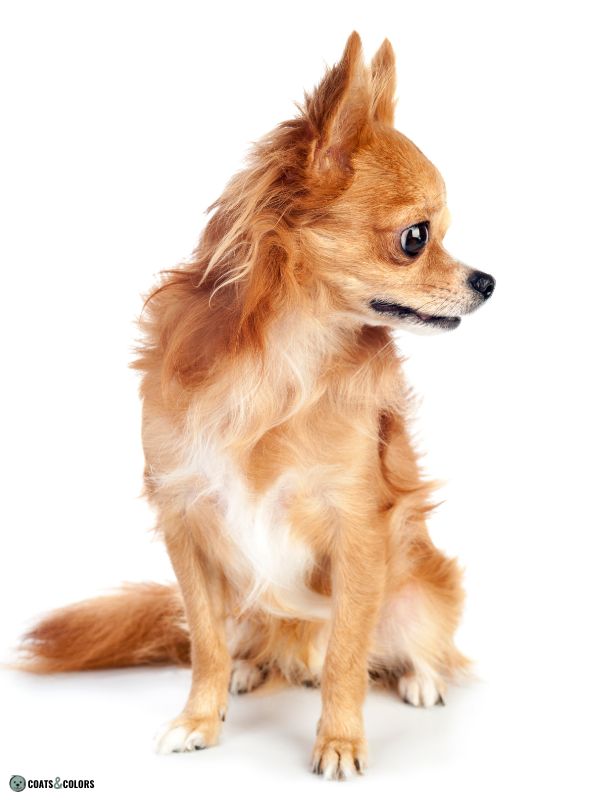
Countershading Look-Alikes
Not every dog with very light phaeomelanin or a gradual transition from lighter to darker areas has countershading. For example, these patterns are not caused by countershading:
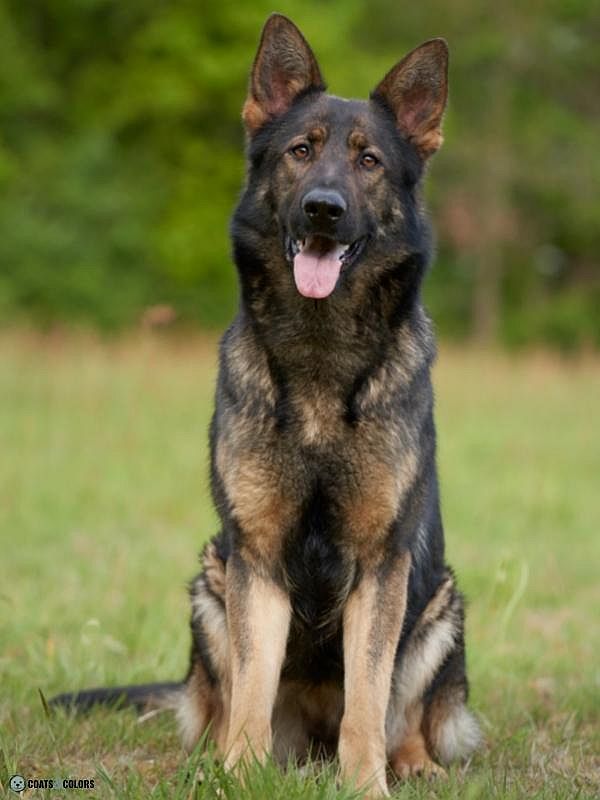
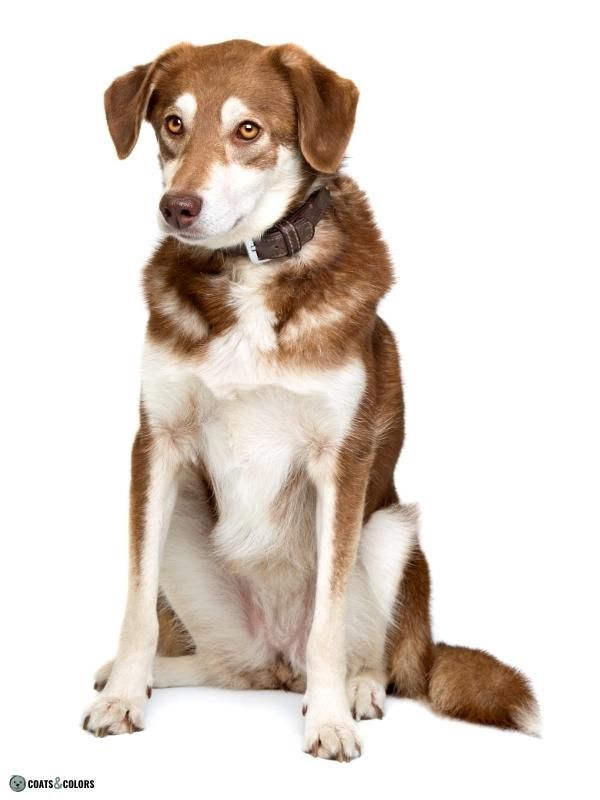
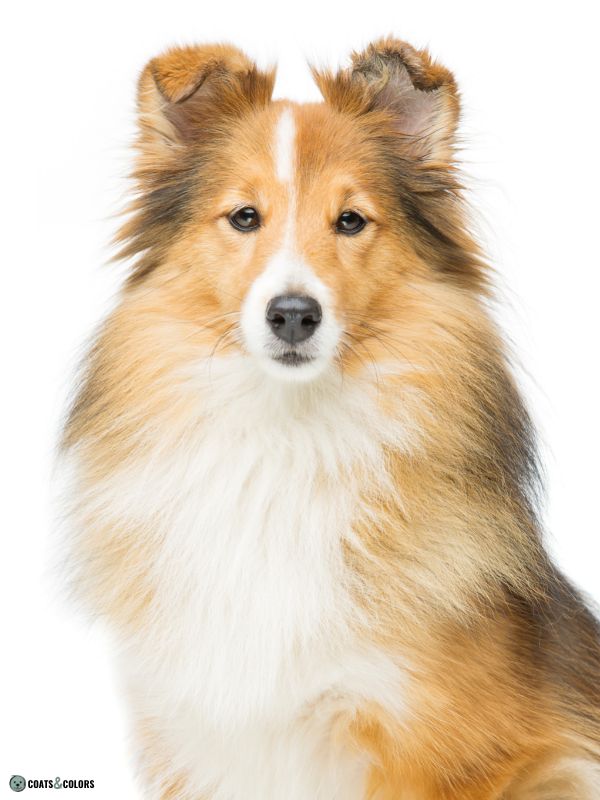
- Patterened dogs don’t produce dark eumelanin shading on their ventral side. Dogs with a shaded sable or an agouti pattern have a dark back and clear tan legs. This can resemble countershading, especially when paired with a low phaeomelanin intensity.
- A light phaeomelanin intensity caused by domino can make a dog look lighter than expected and sometimes cause pale open face markings. However, domino removes eumelanin from a pattern while countershading can only reduce phaeomelanin intensity.
- Some small white markings on the chest, legs and muzzle can look like countershading in longhaired dogs. But white spotting is caused by a true lack of any pigment and will have crisp edges.
Learn More
Links
[1] Cuthill IC, Sanghera NS, Penacchio O, Lovell PG, Ruxton GD, Harris JM. Optimizing countershading camouflage. Proc Natl Acad Sci U S A. 2016. https://doi.org/10.1073/pnas.1611589113
[2] Rowland HM. From Abbott Thayer to the present day: what have we learned about the function of countershading?. Philos Trans R Soc Lond B Biol Sci. 2009;364(1516):519-527. https://dx.doi.org/10.1098%2Frstb.2008.0261

Hi! I’m Steffi. I am a biologist and a big time dog nerd. You are curious about coat color genetics? You’ve come to the right place! Read more.



